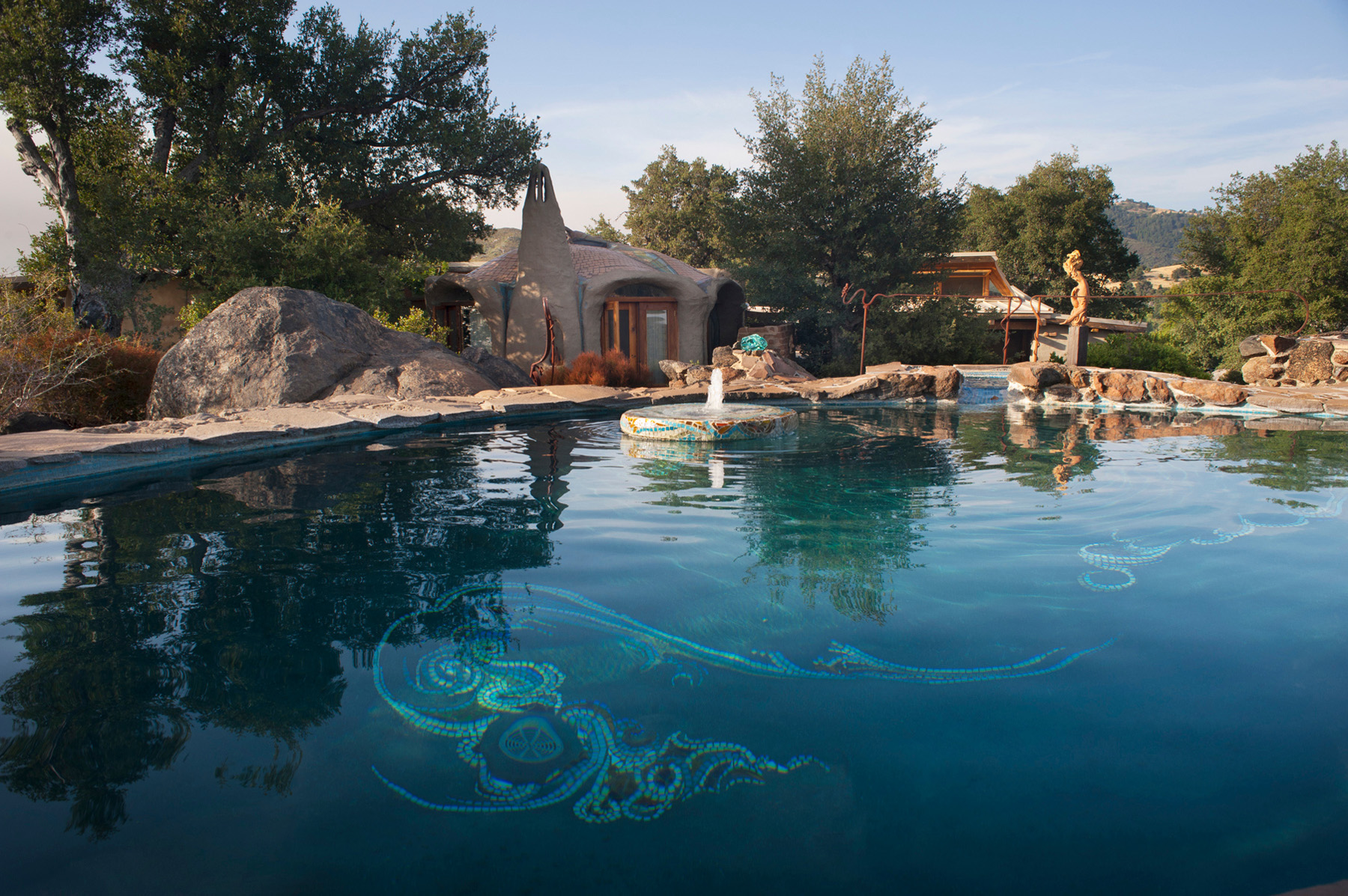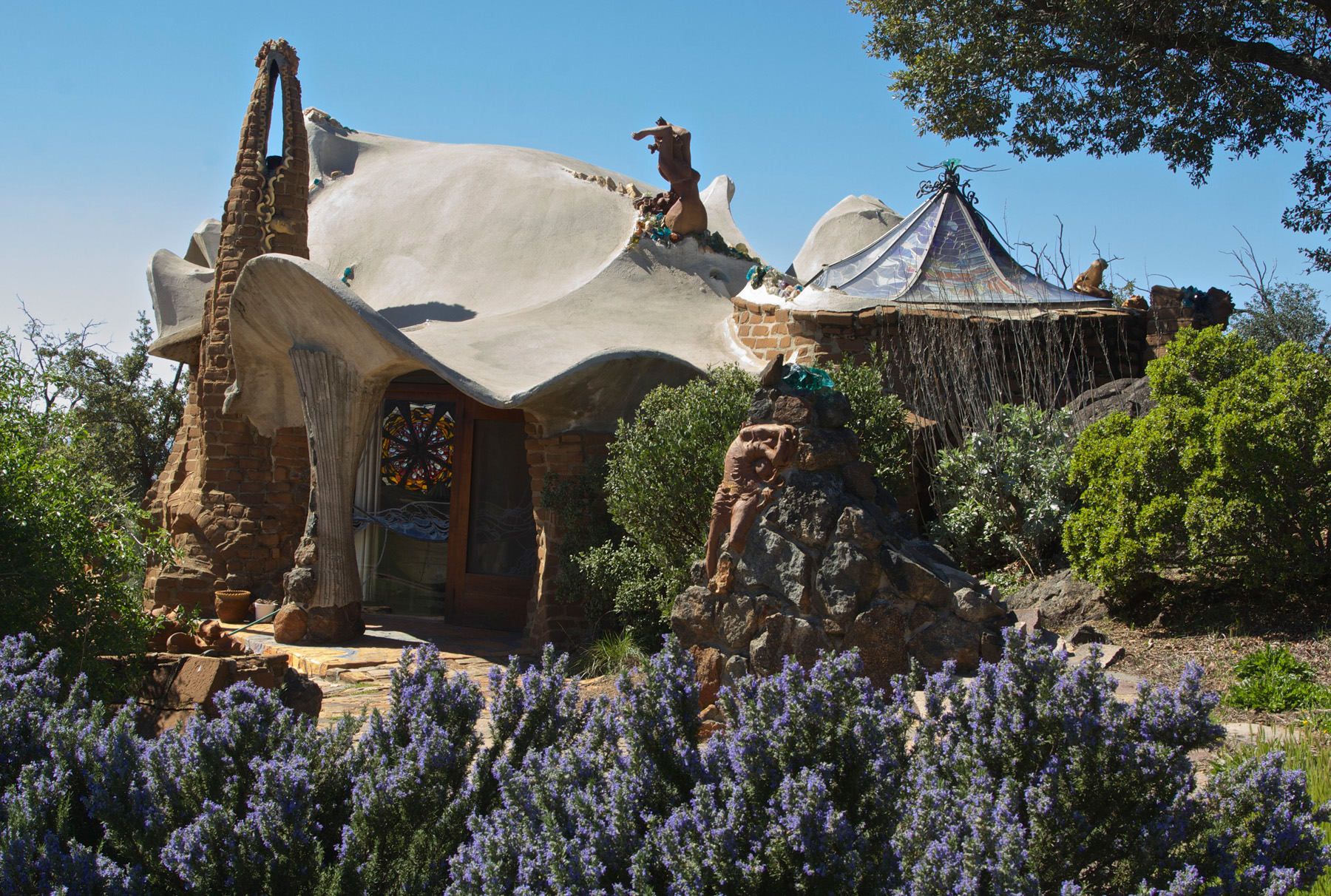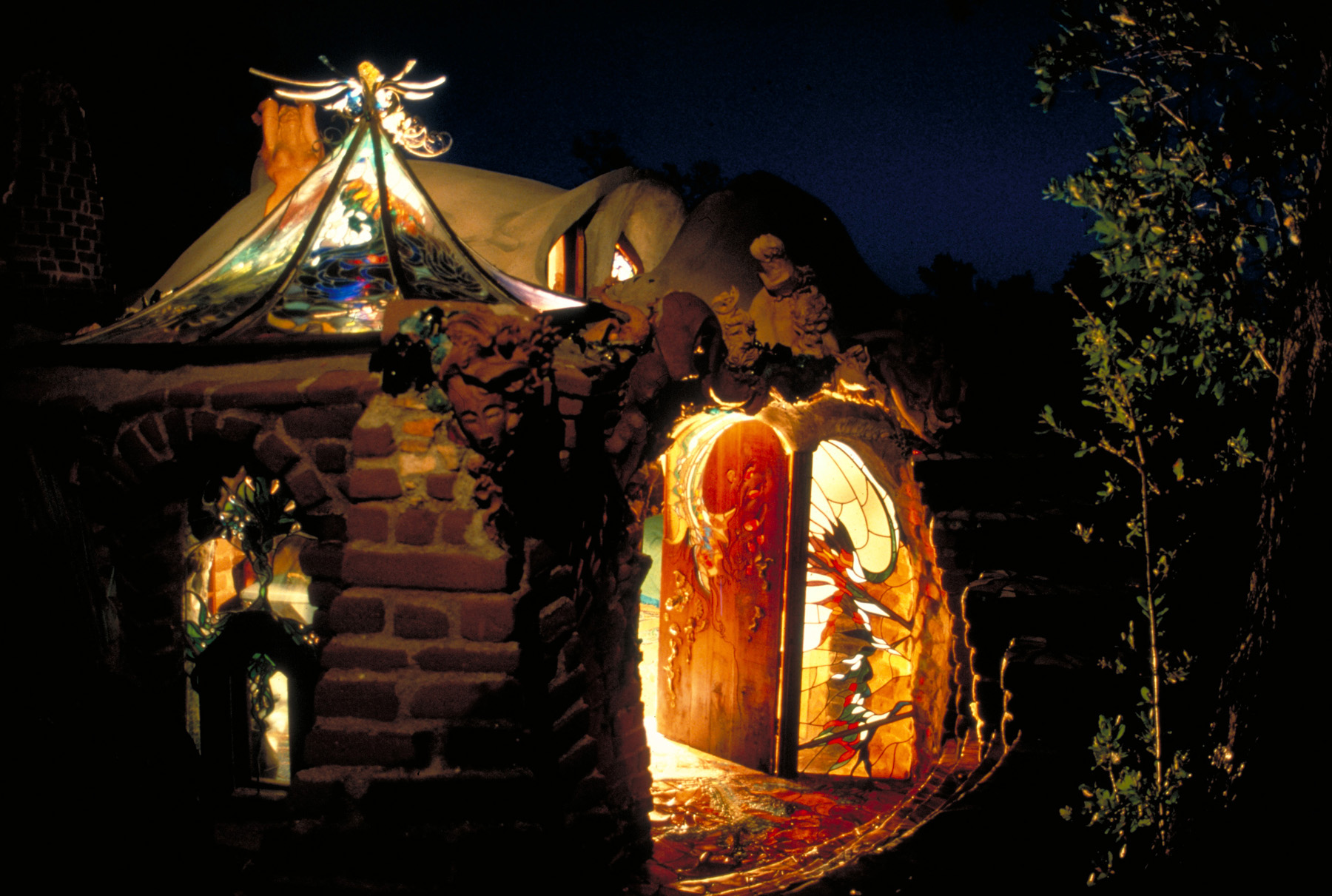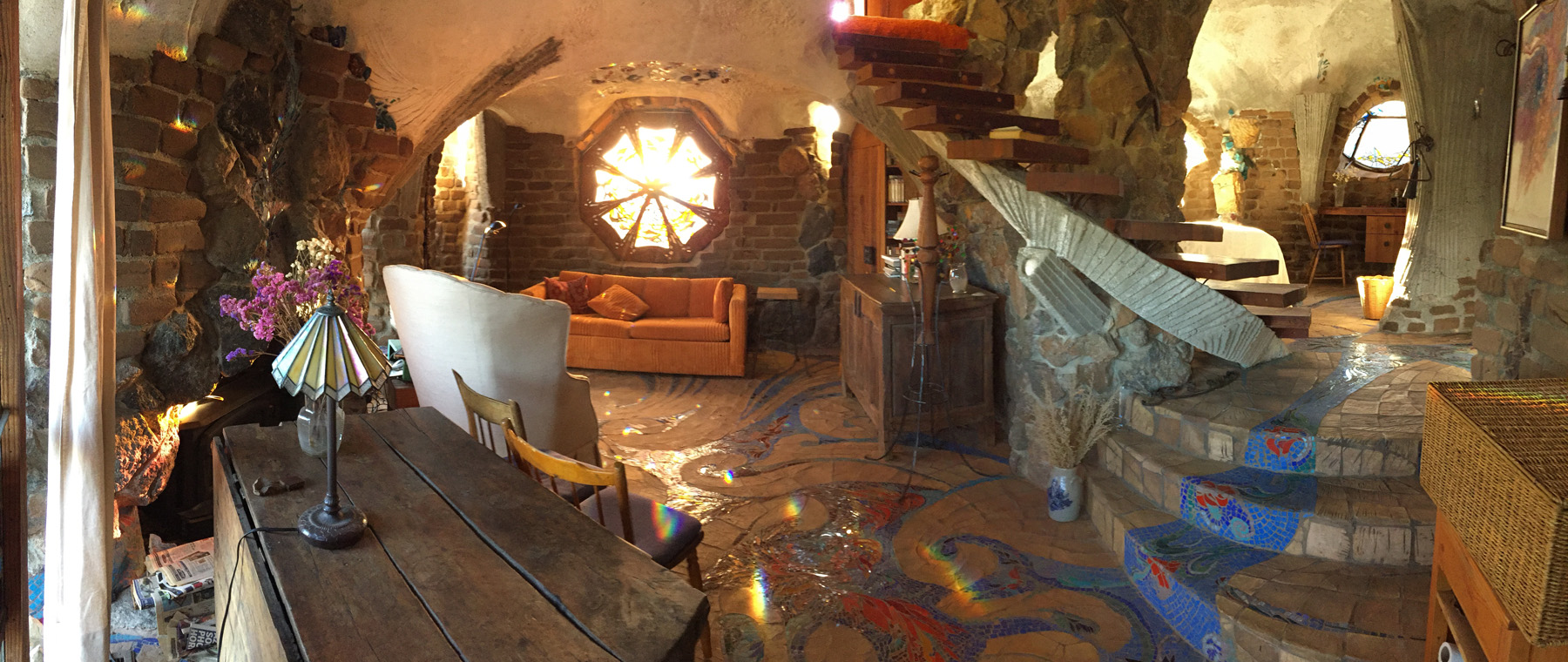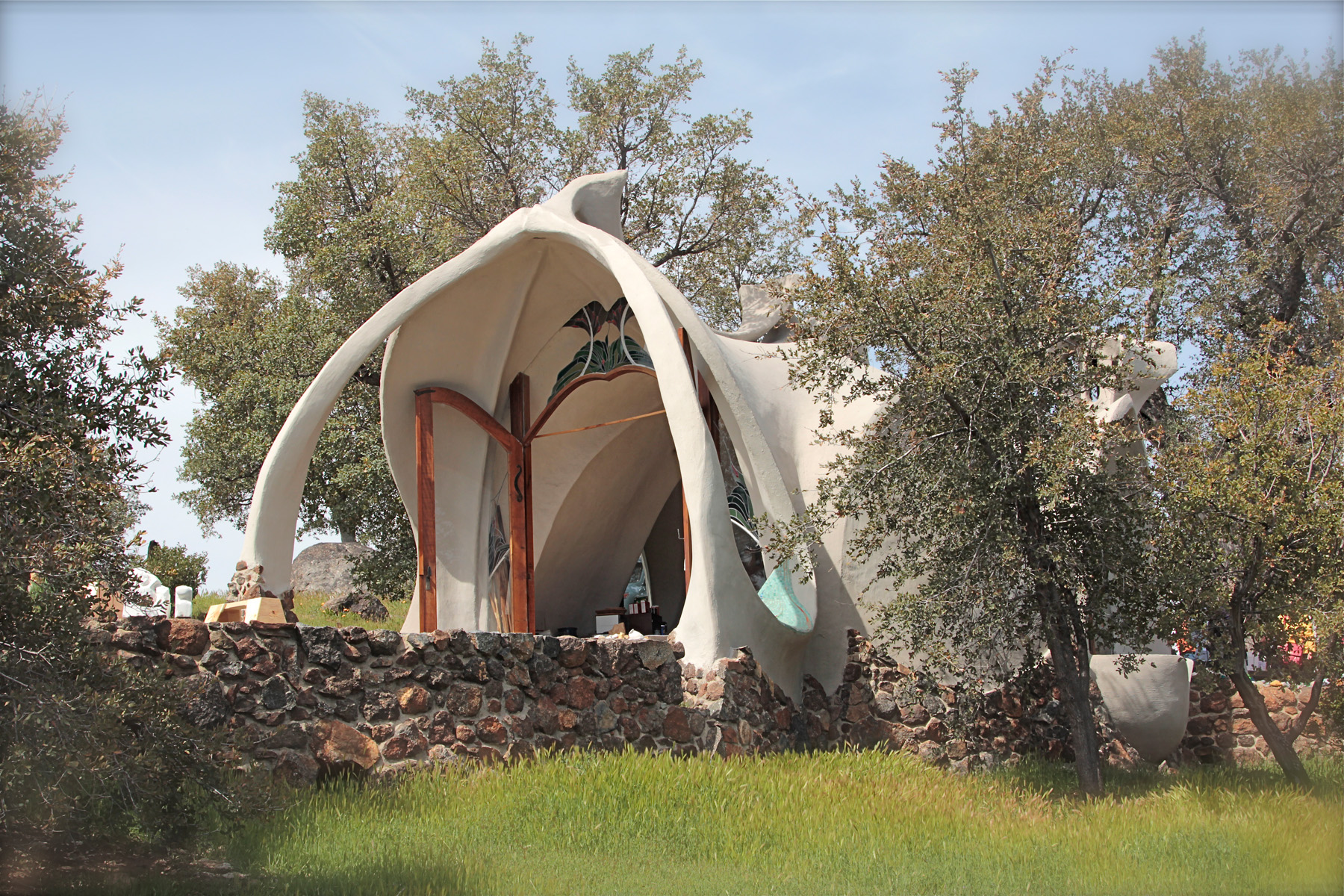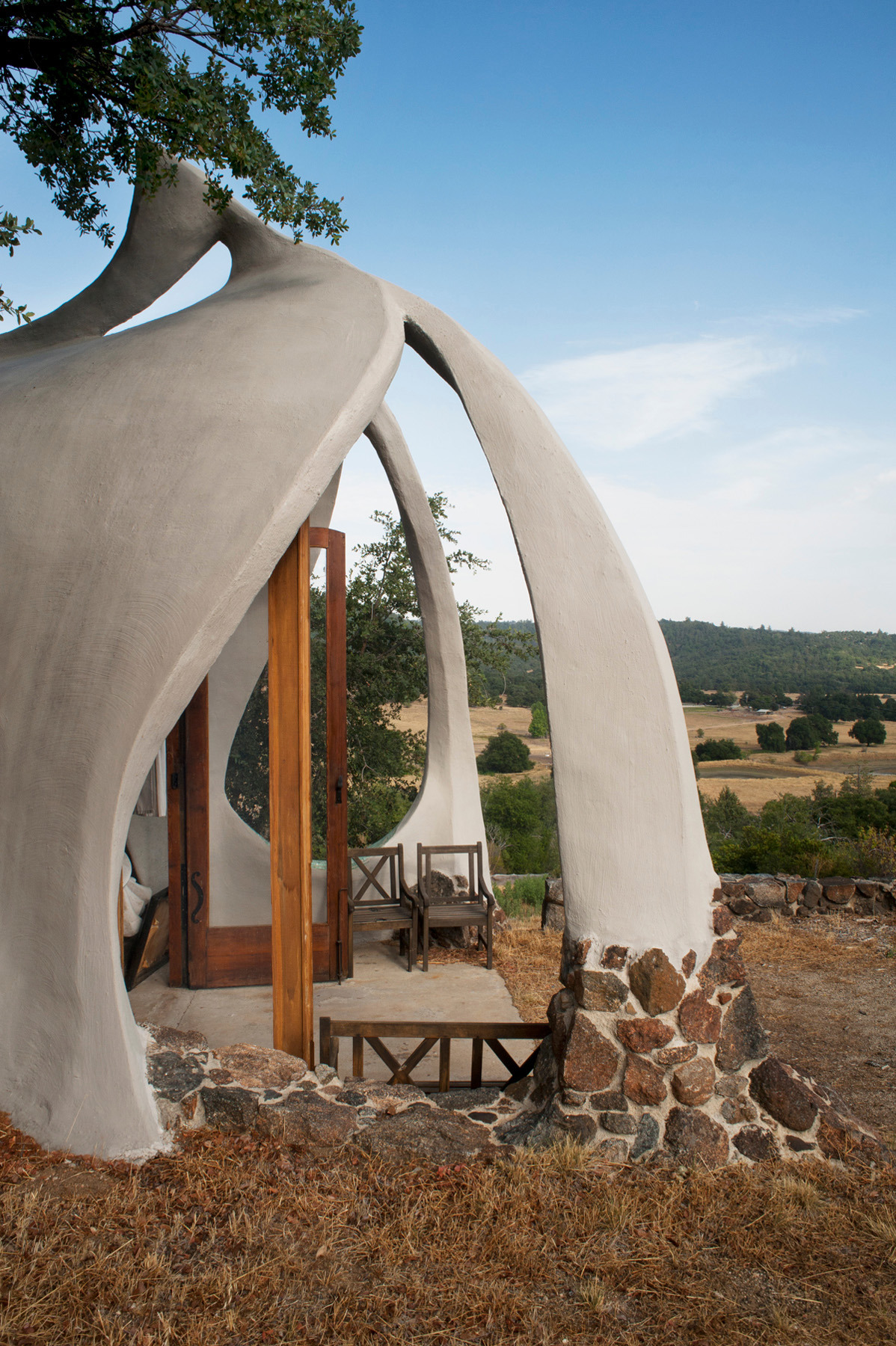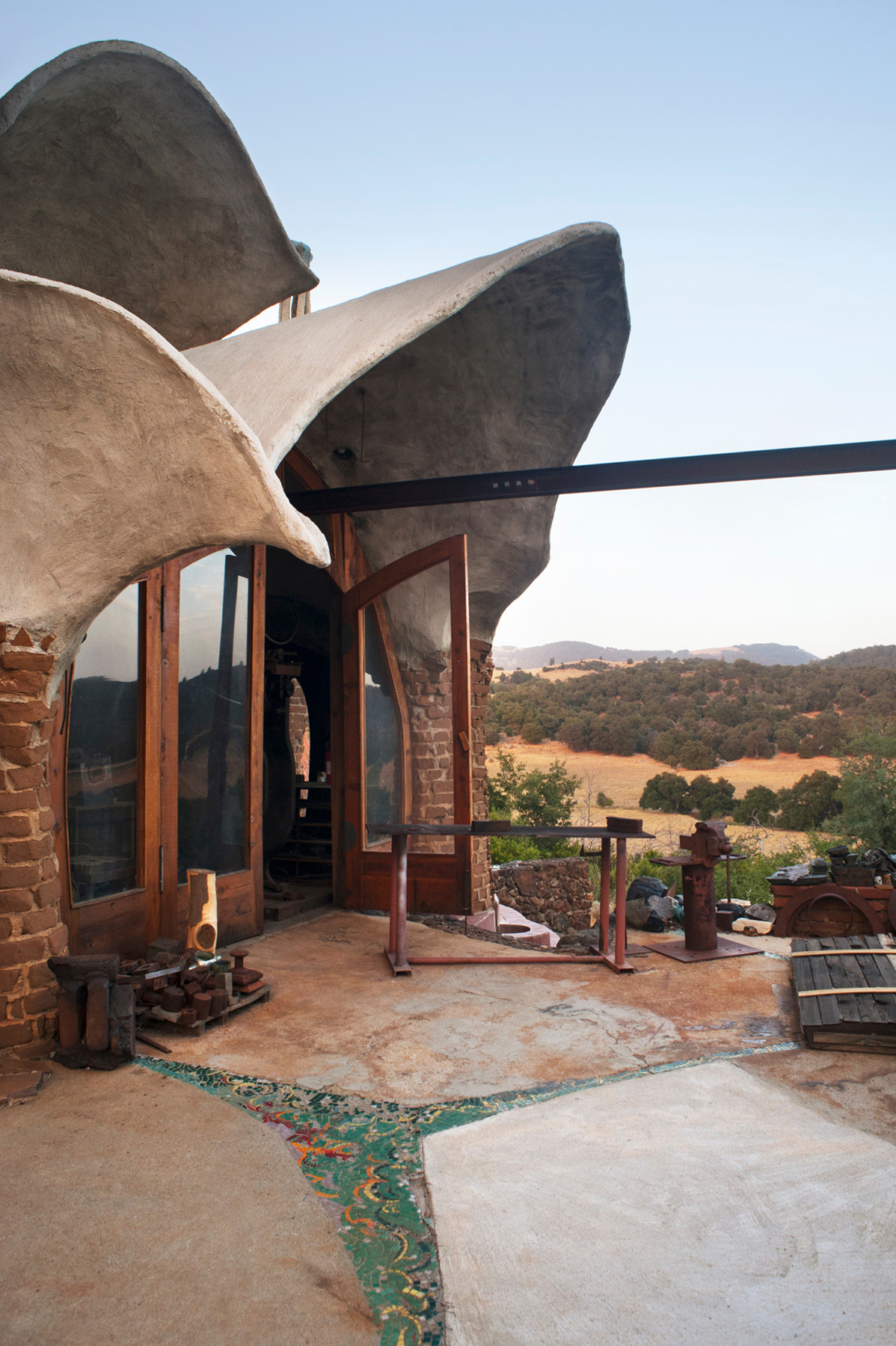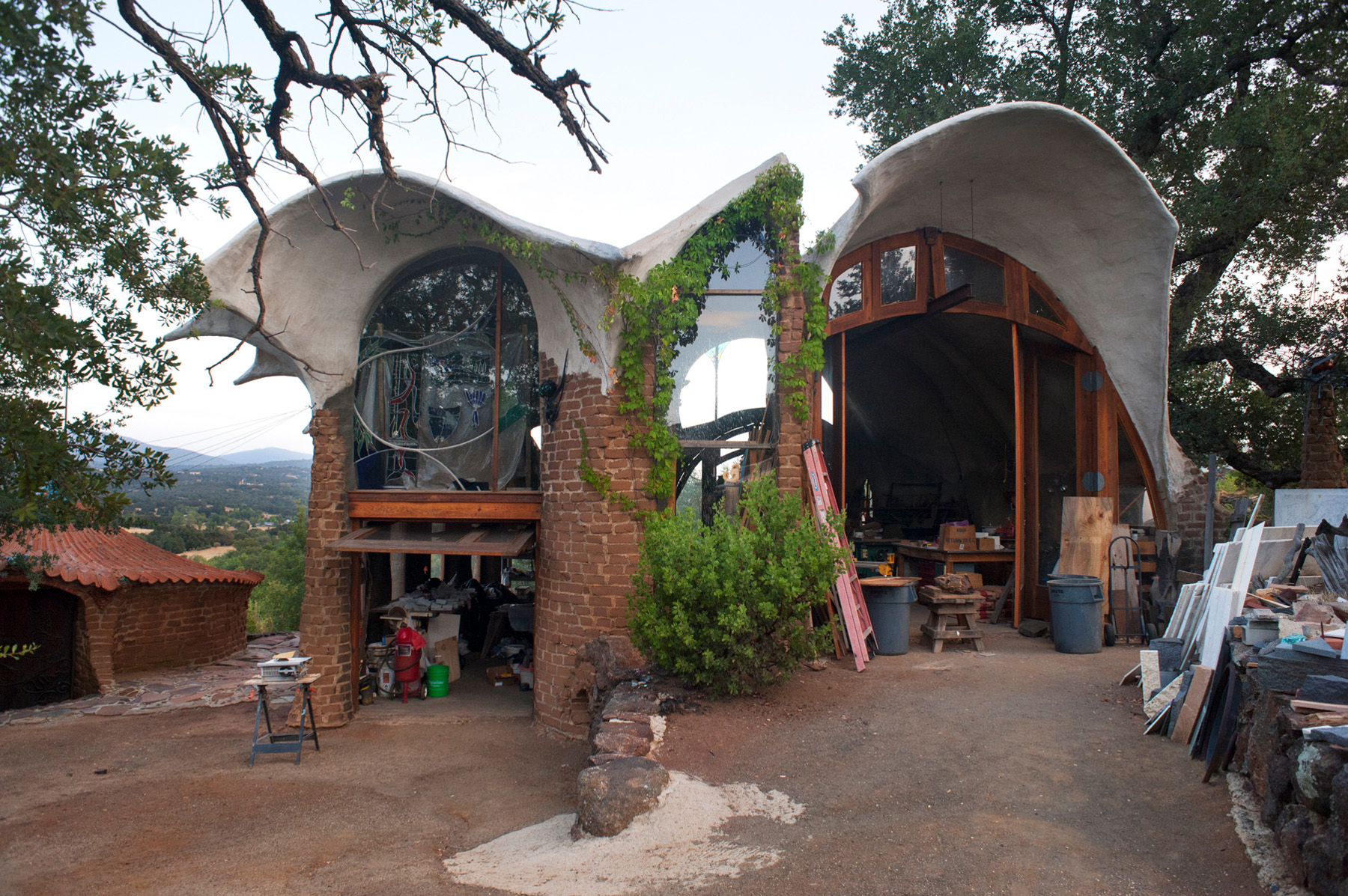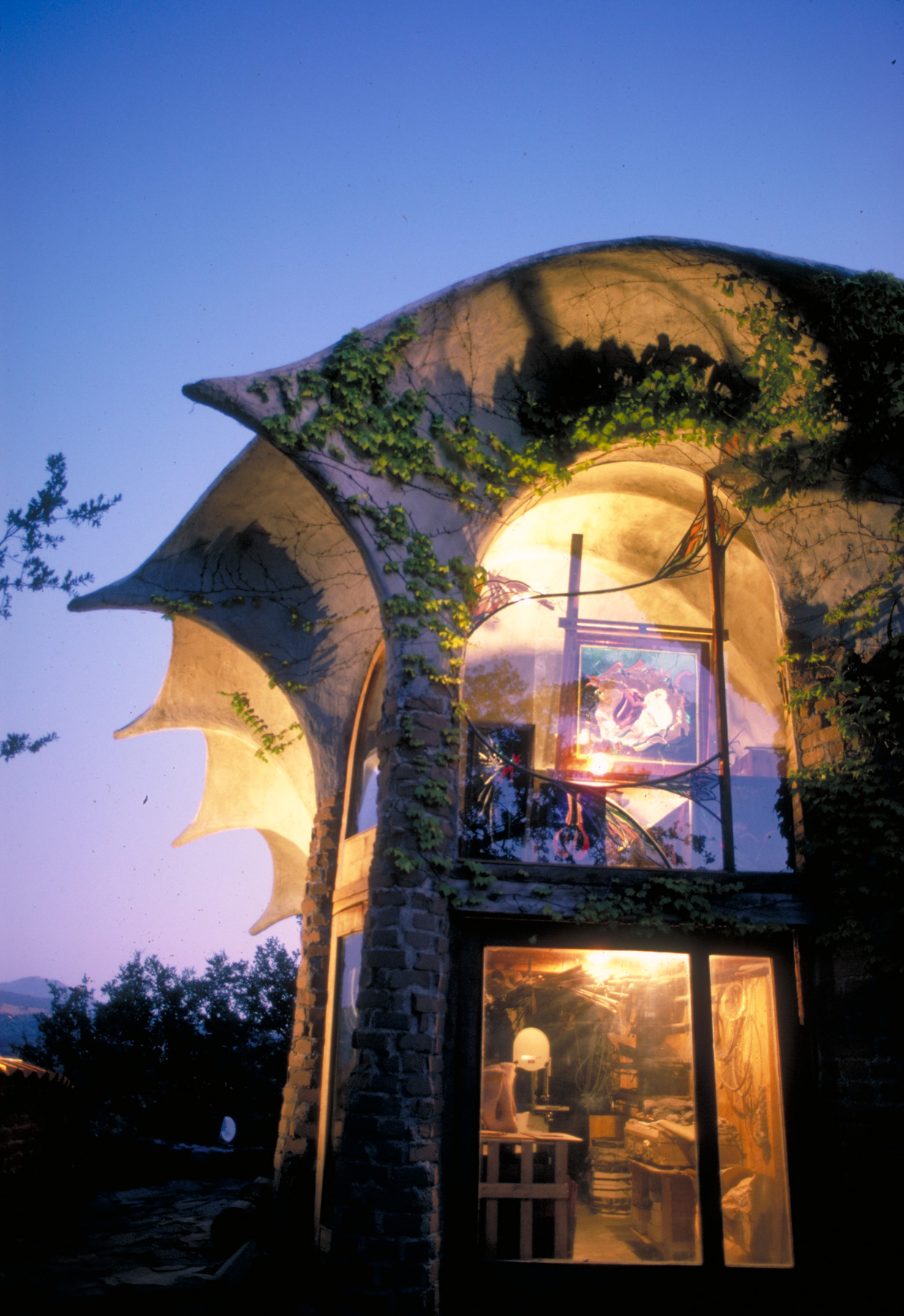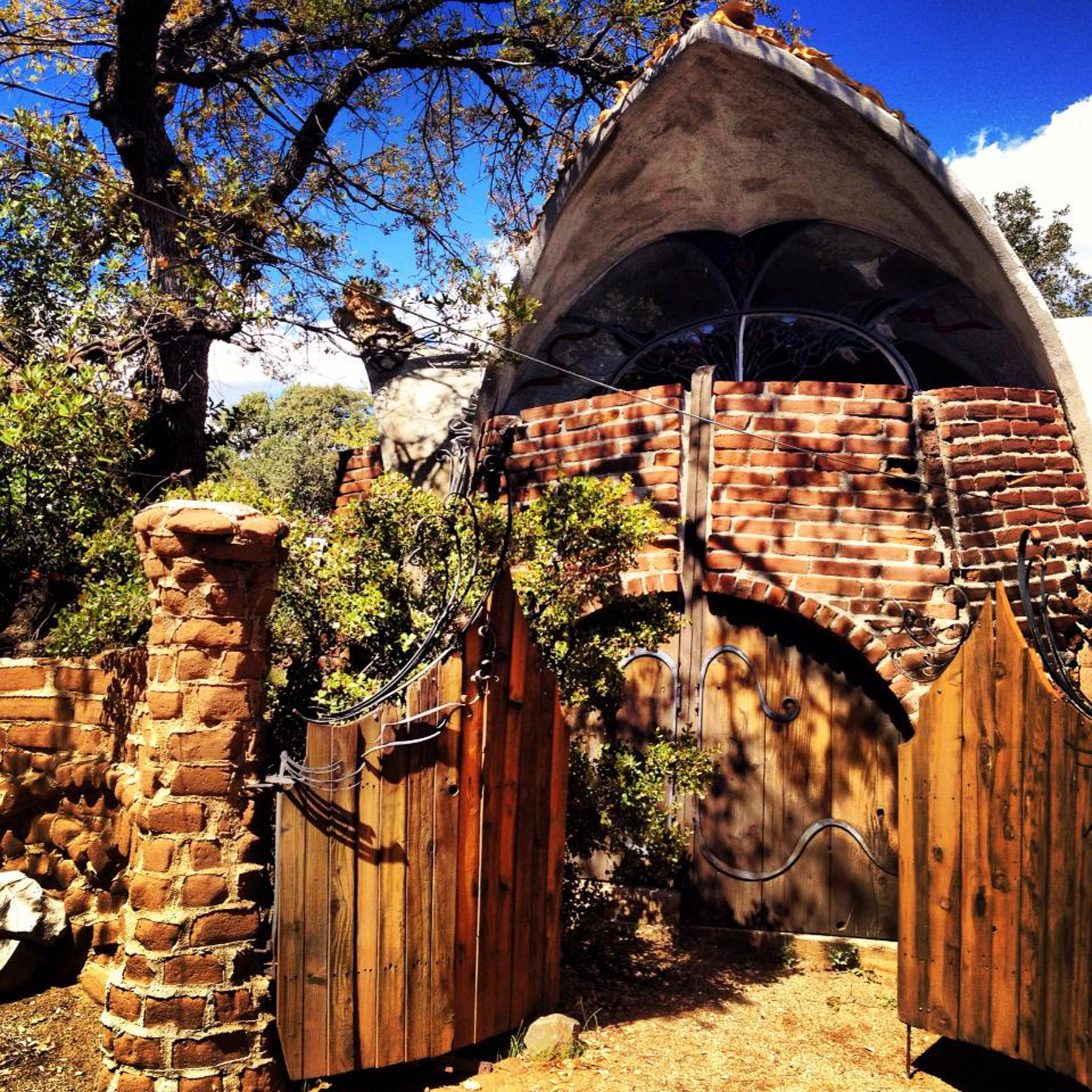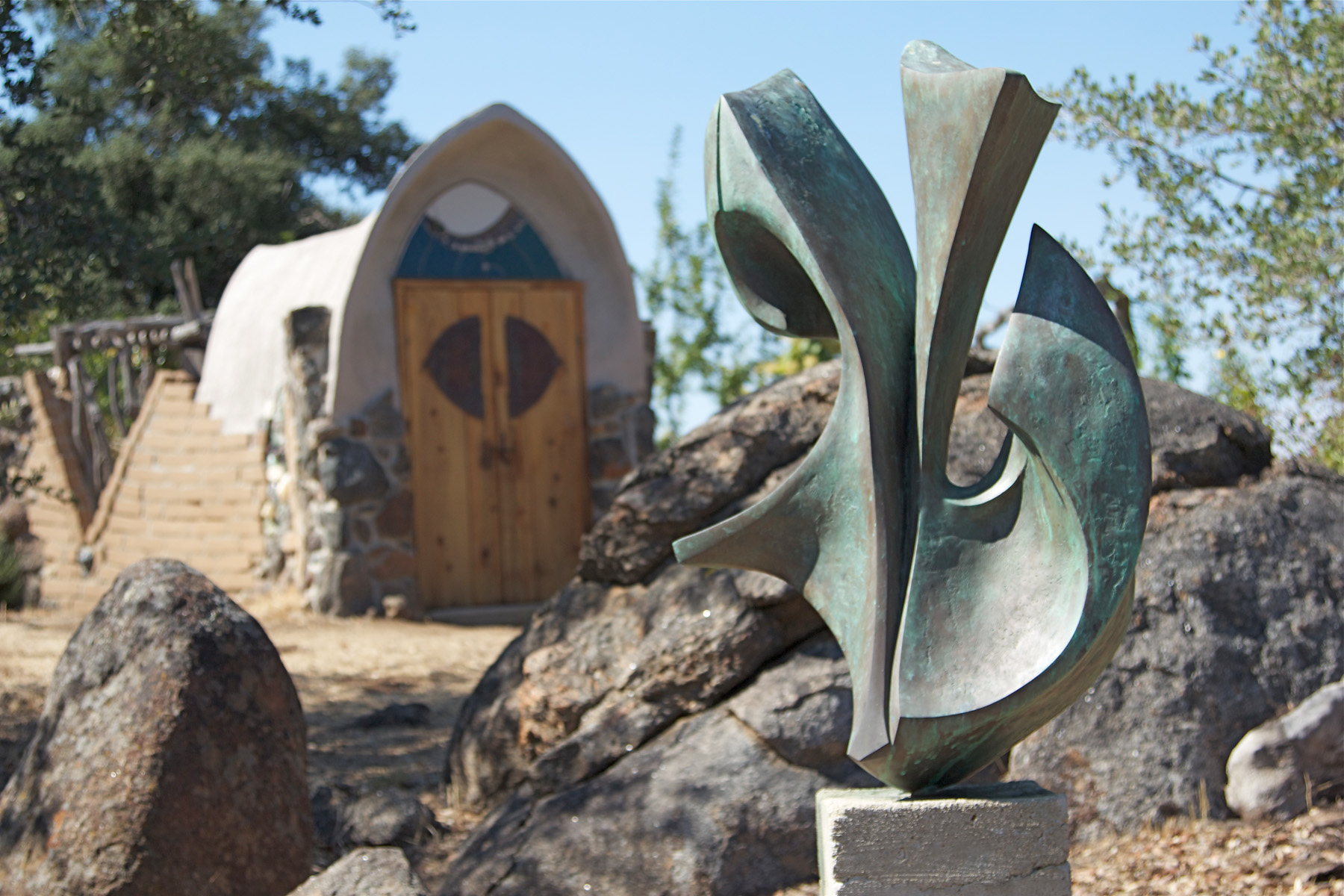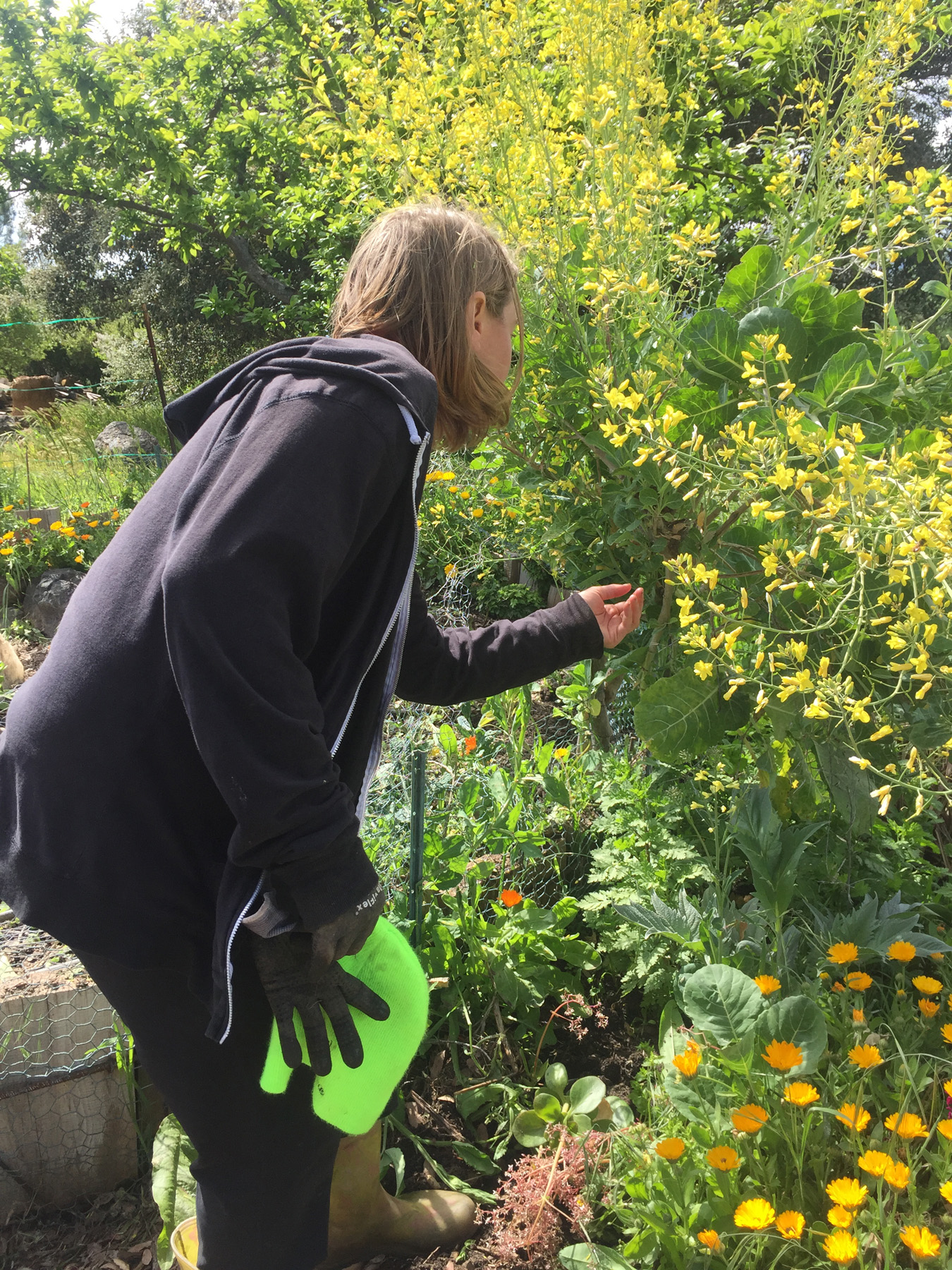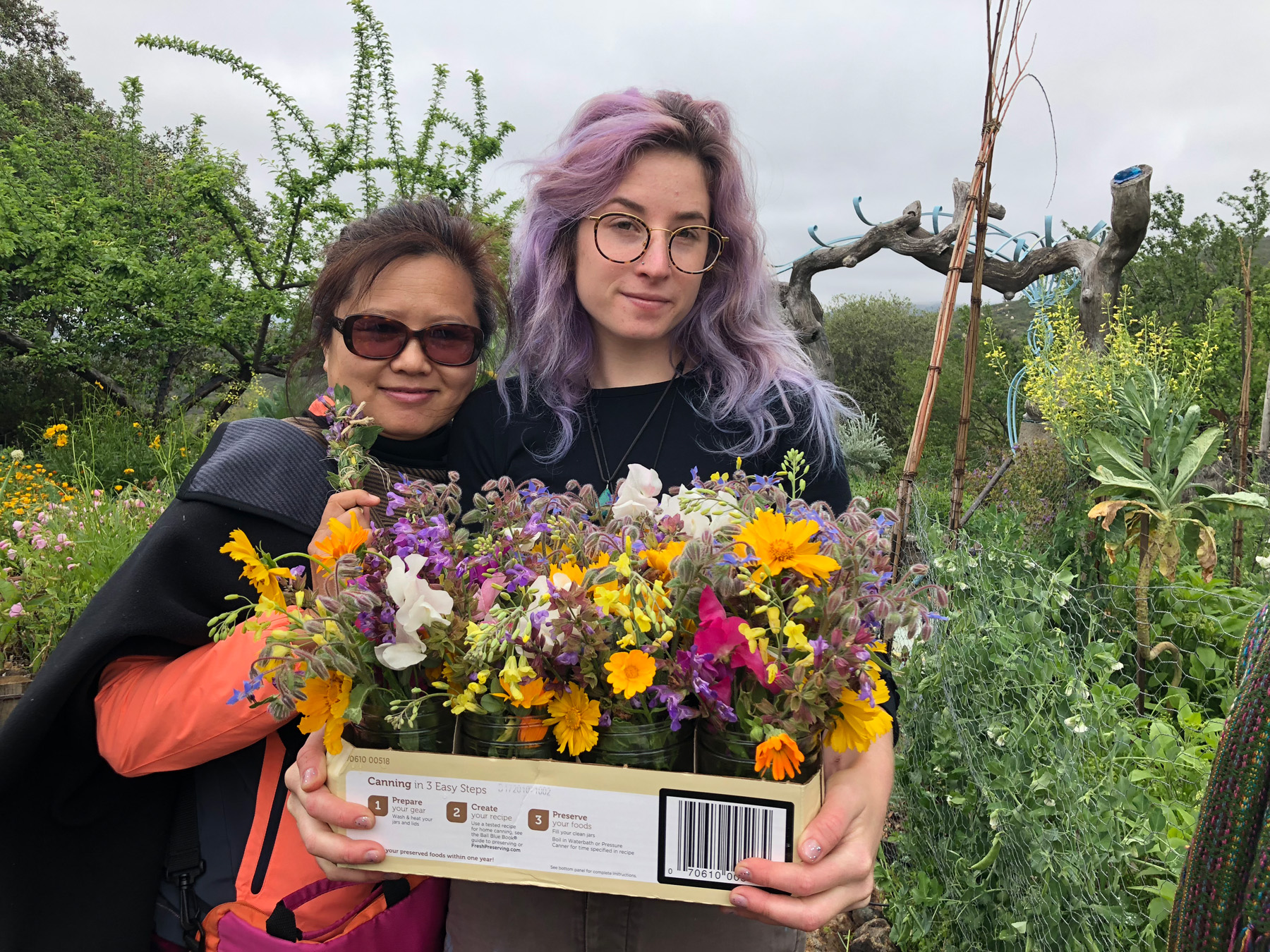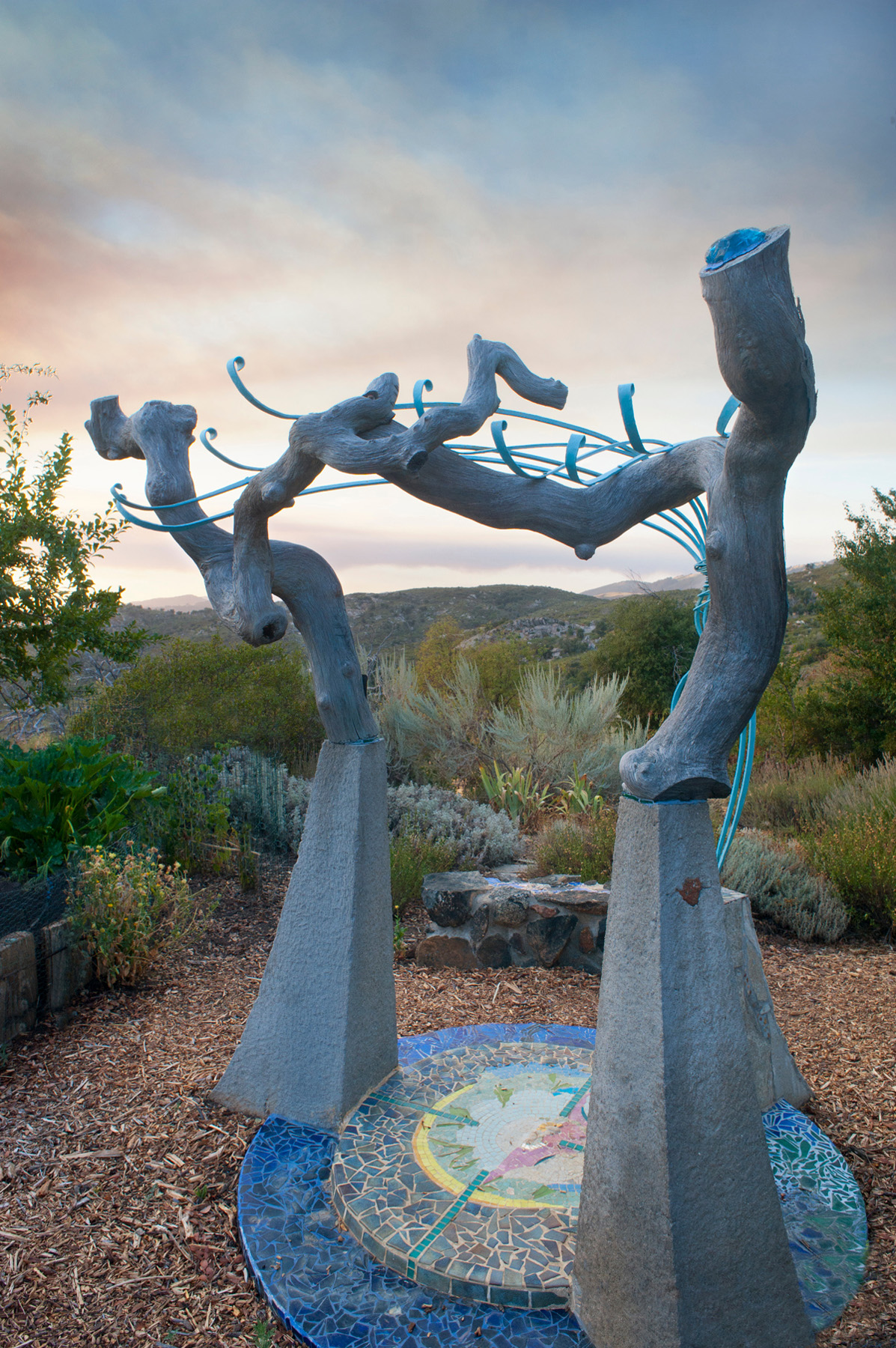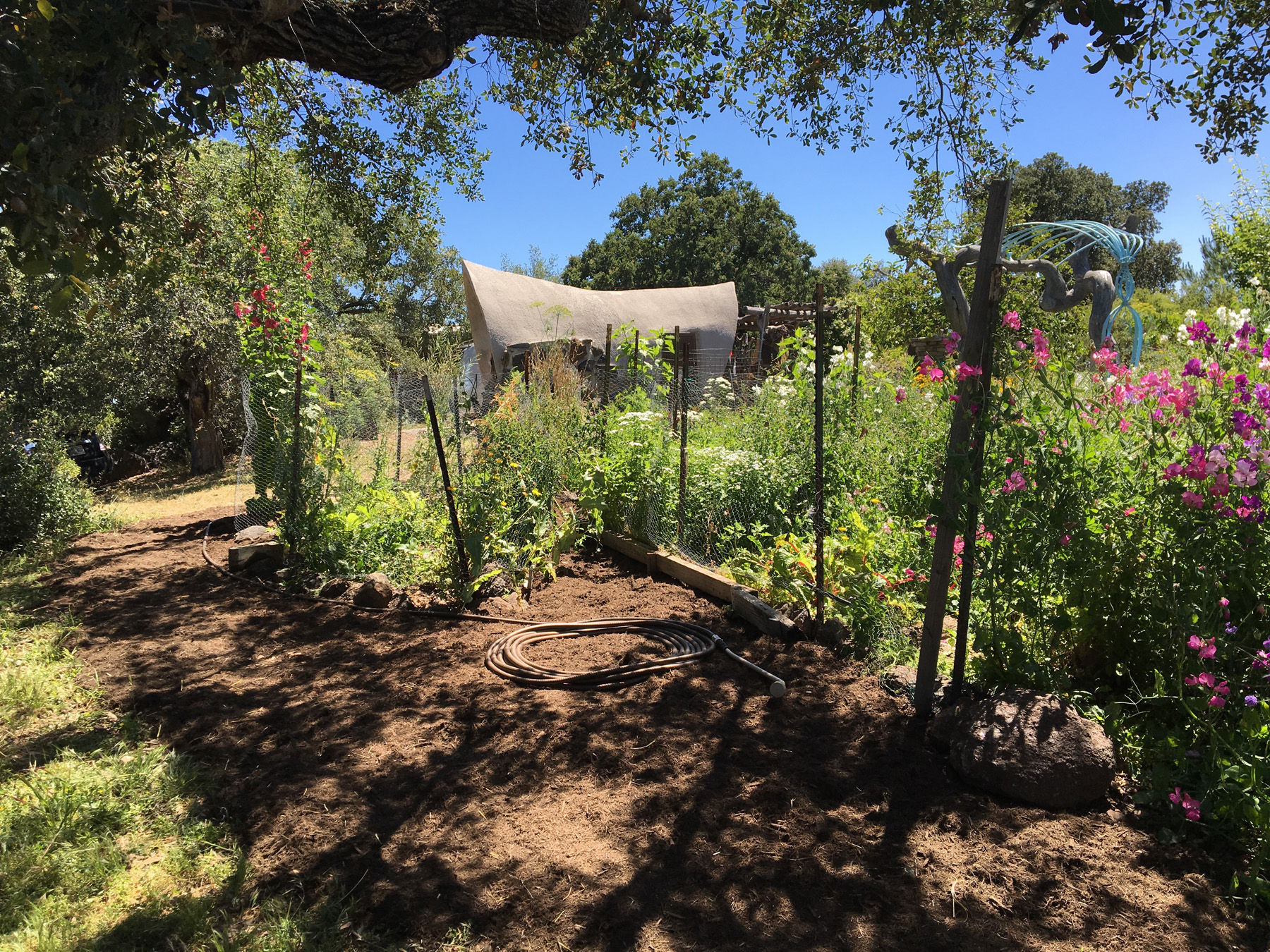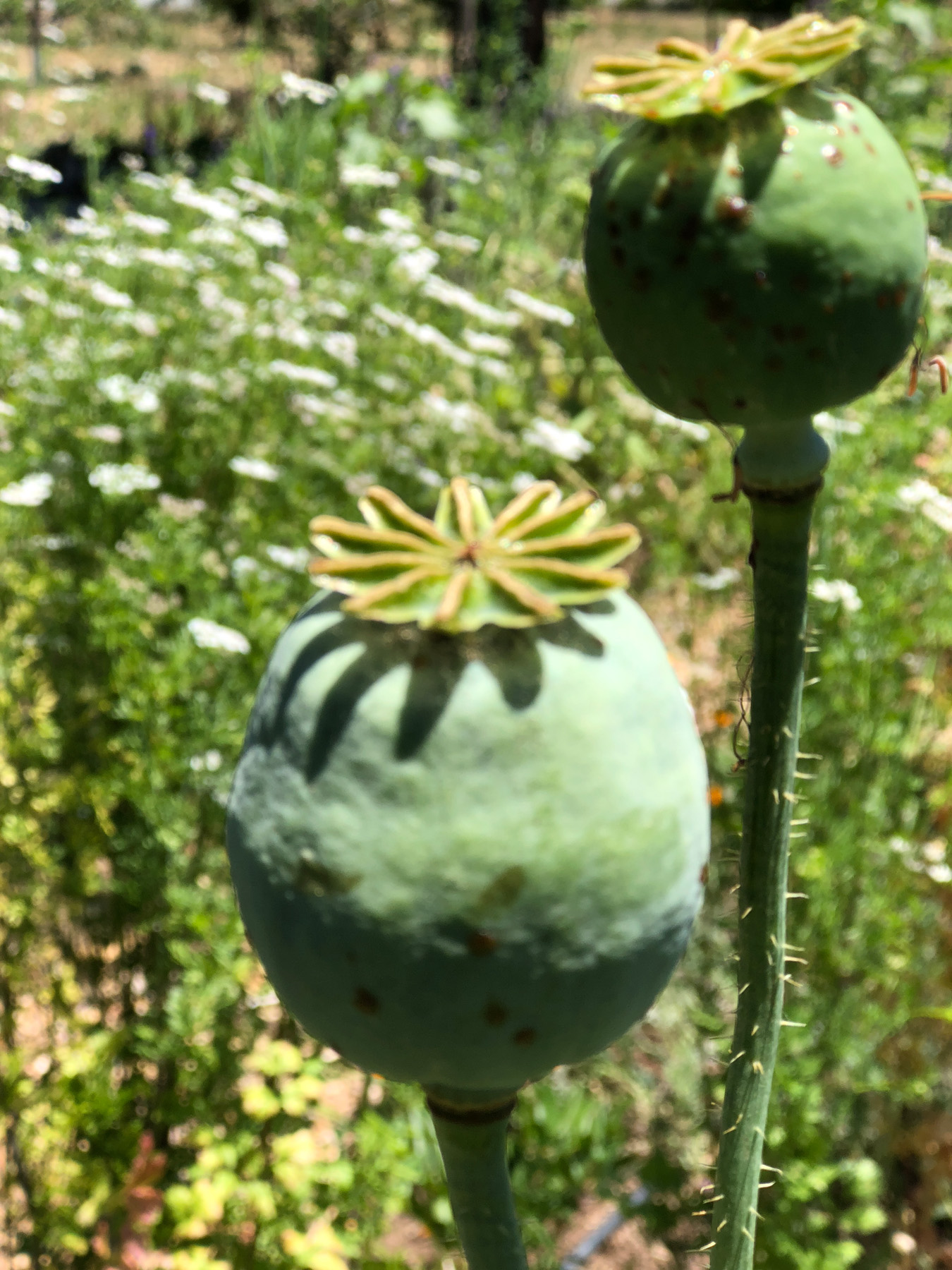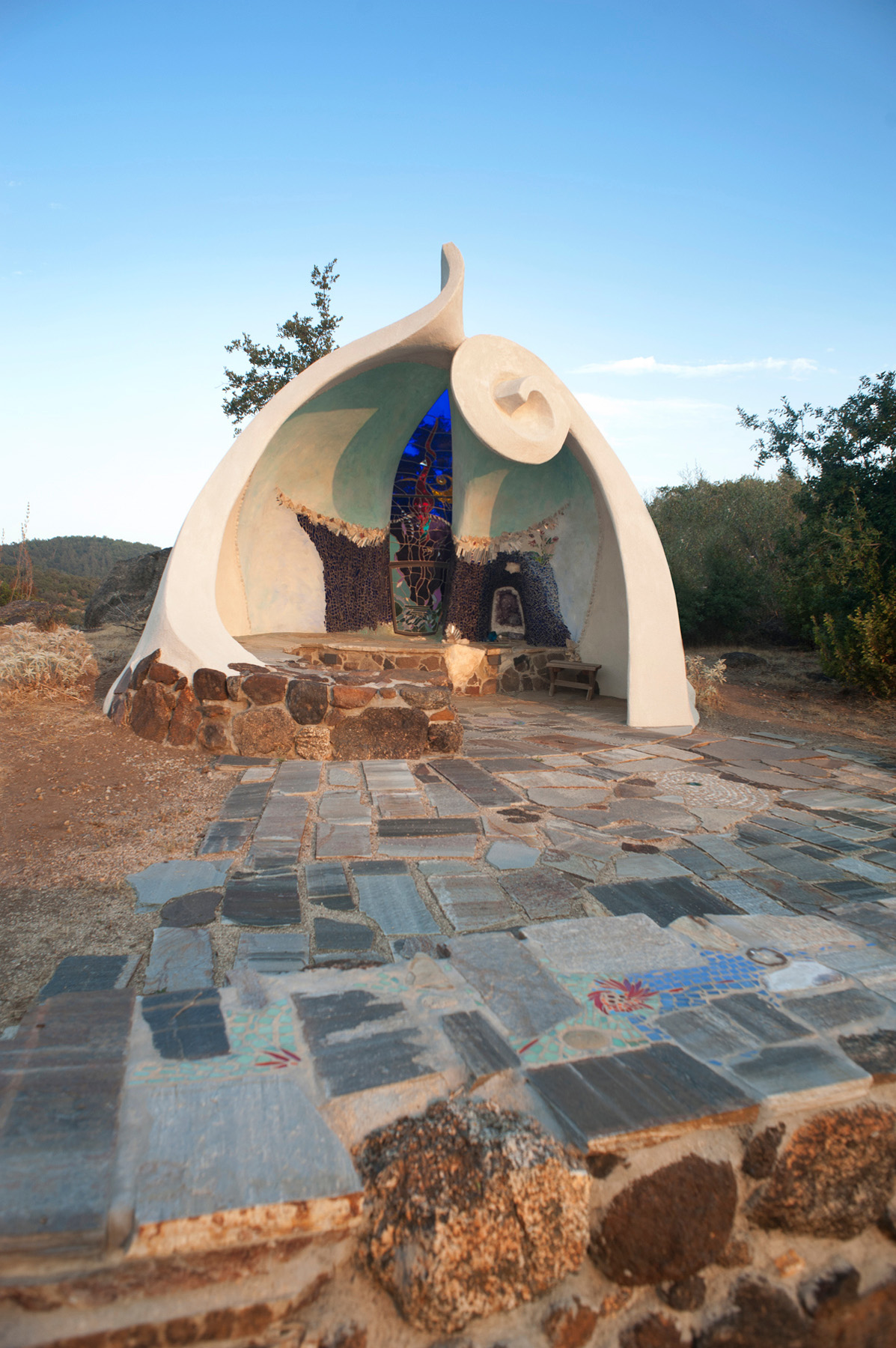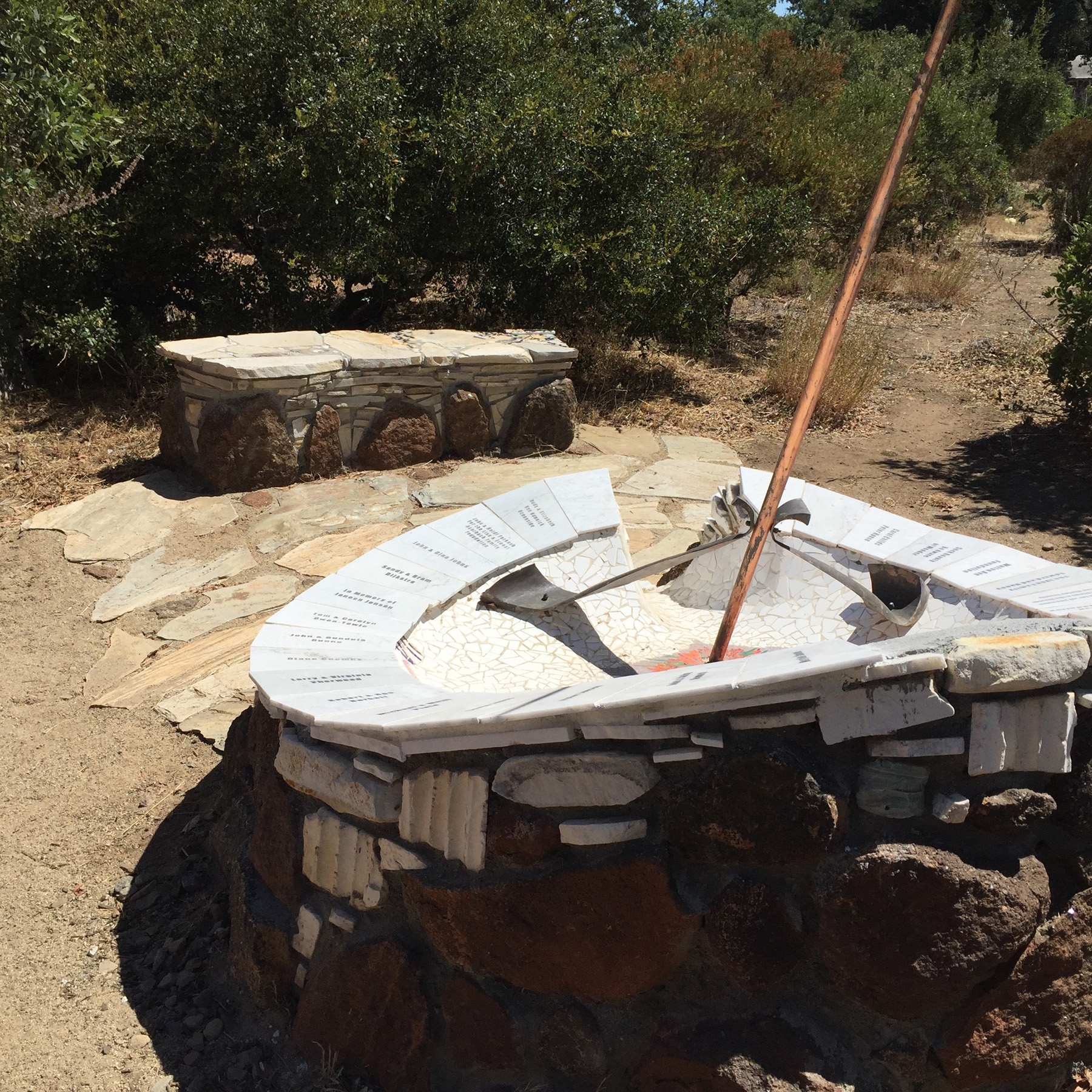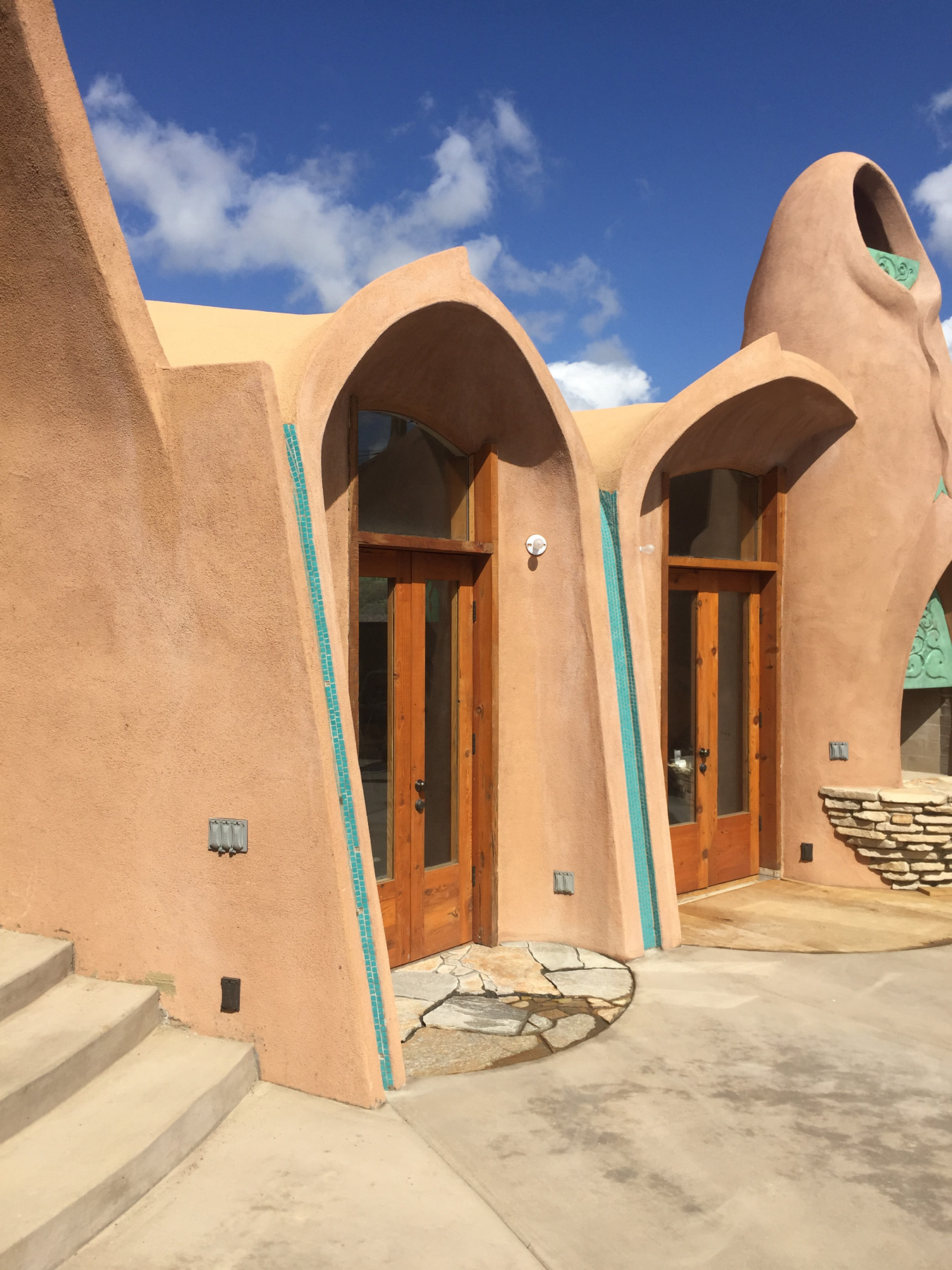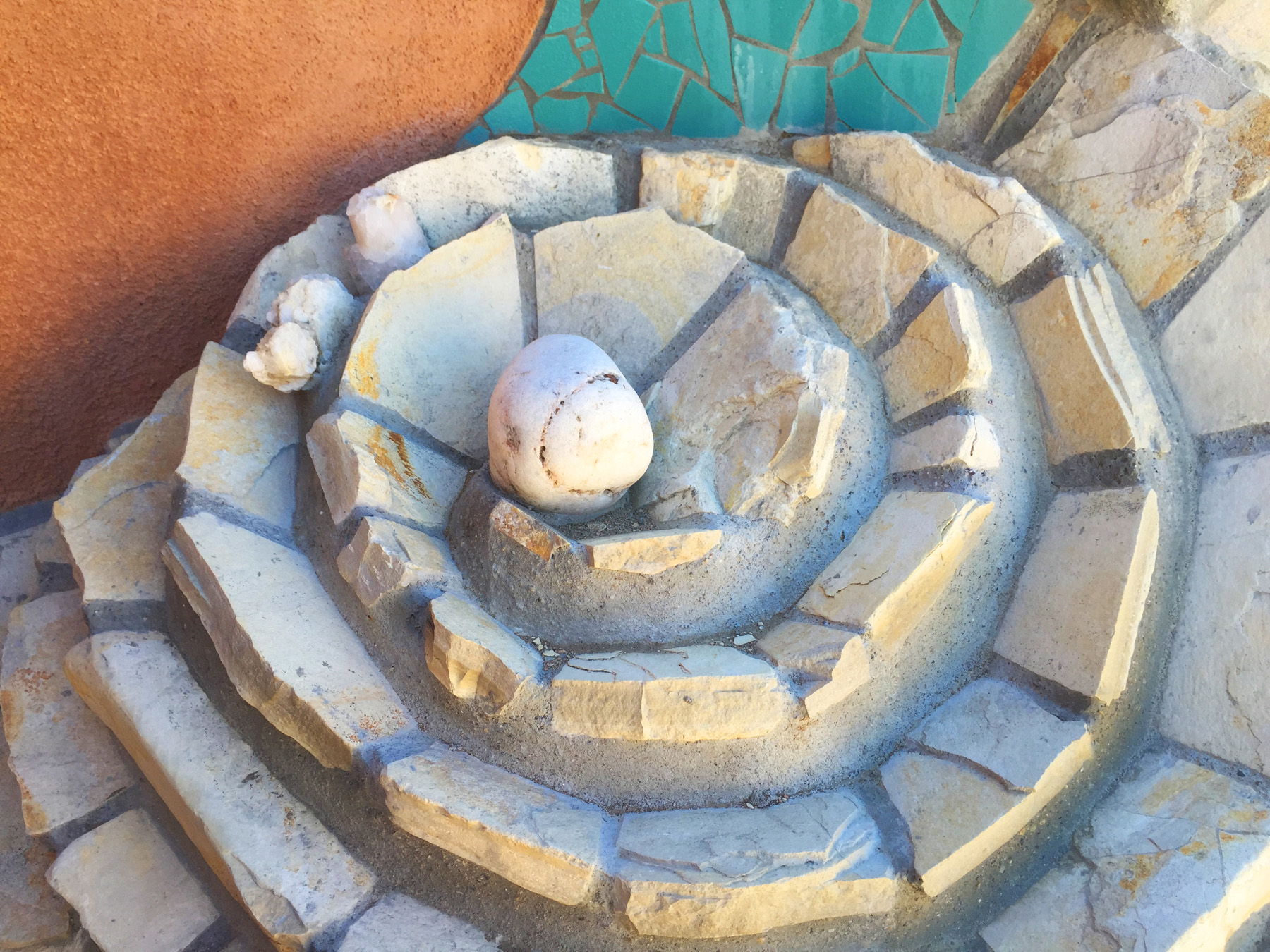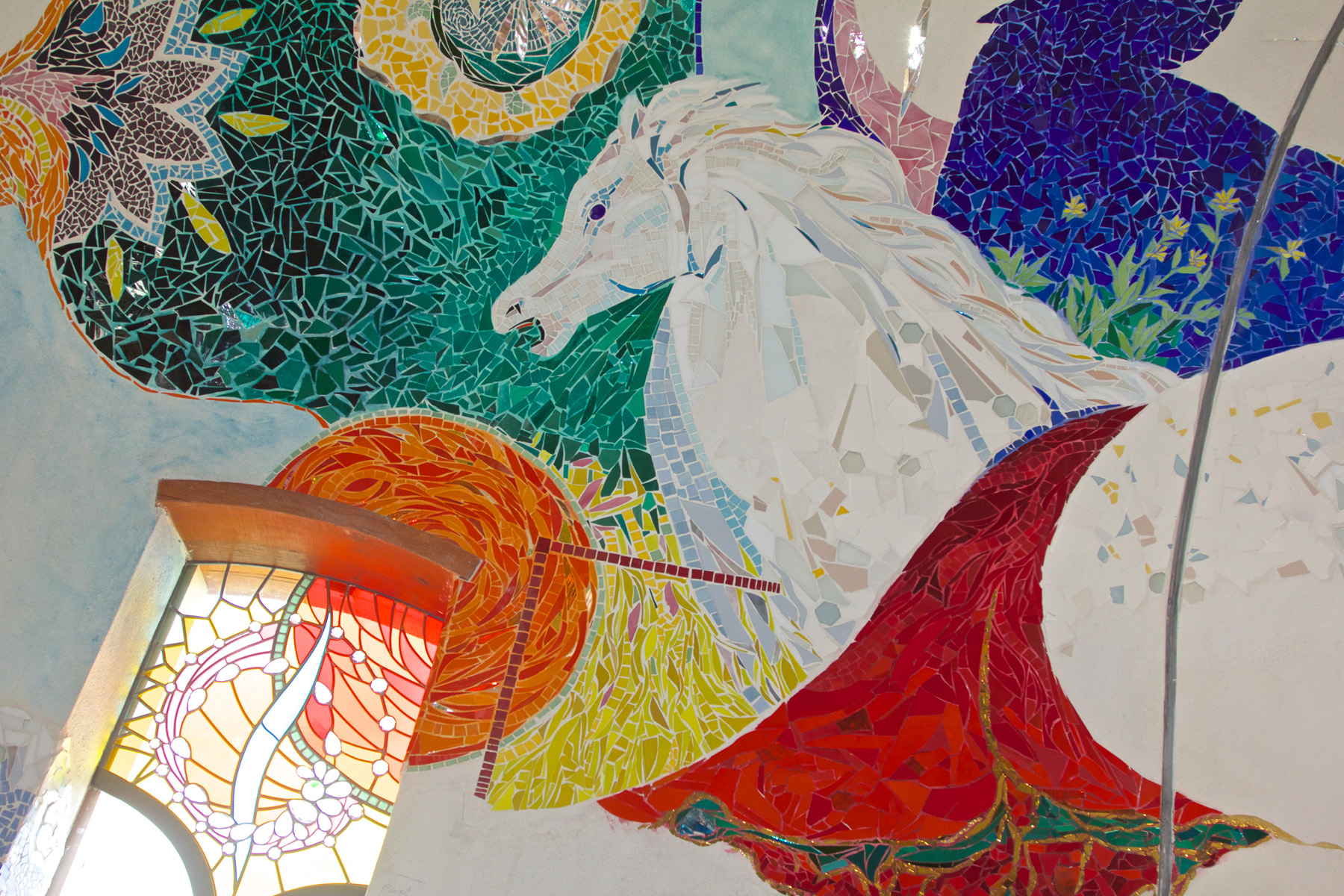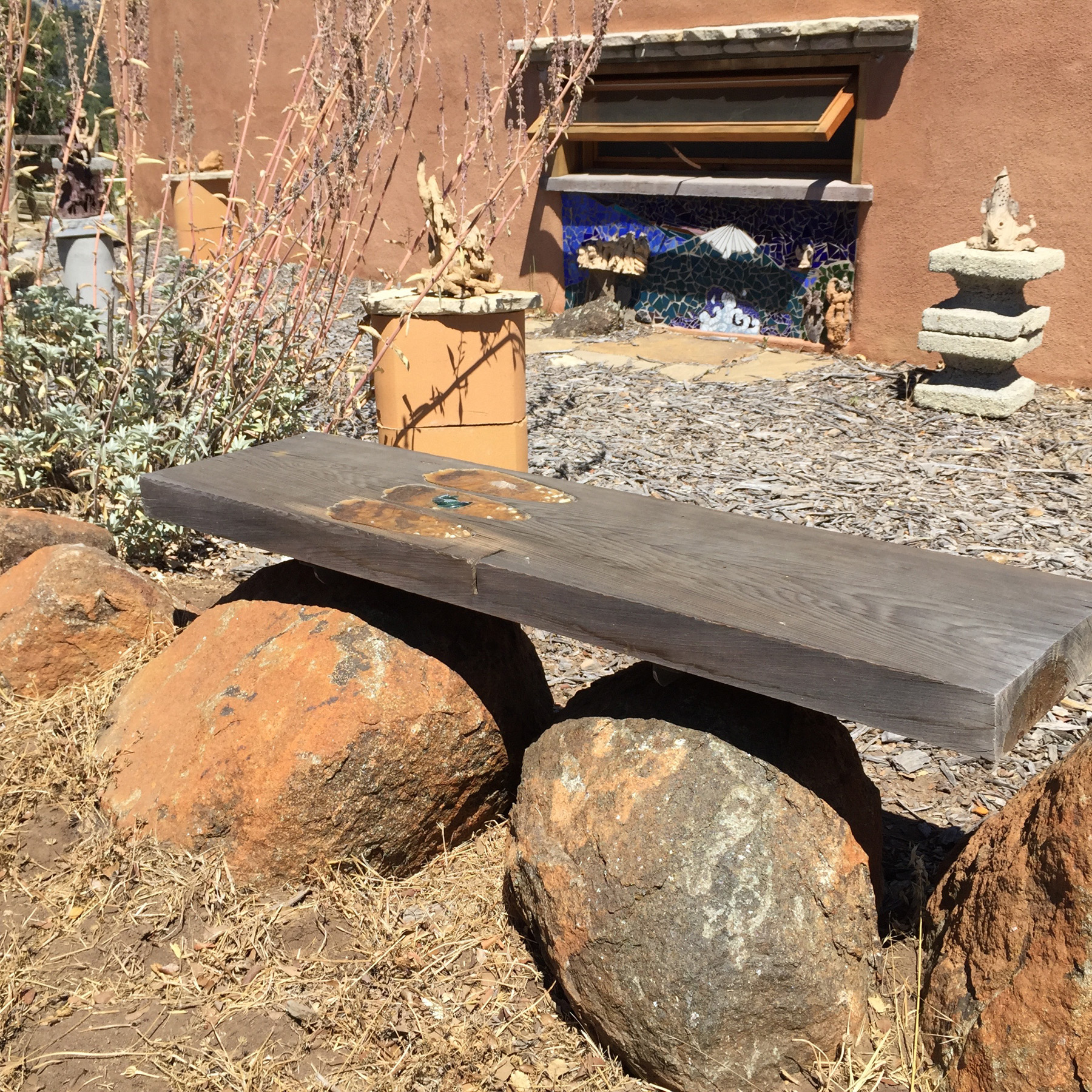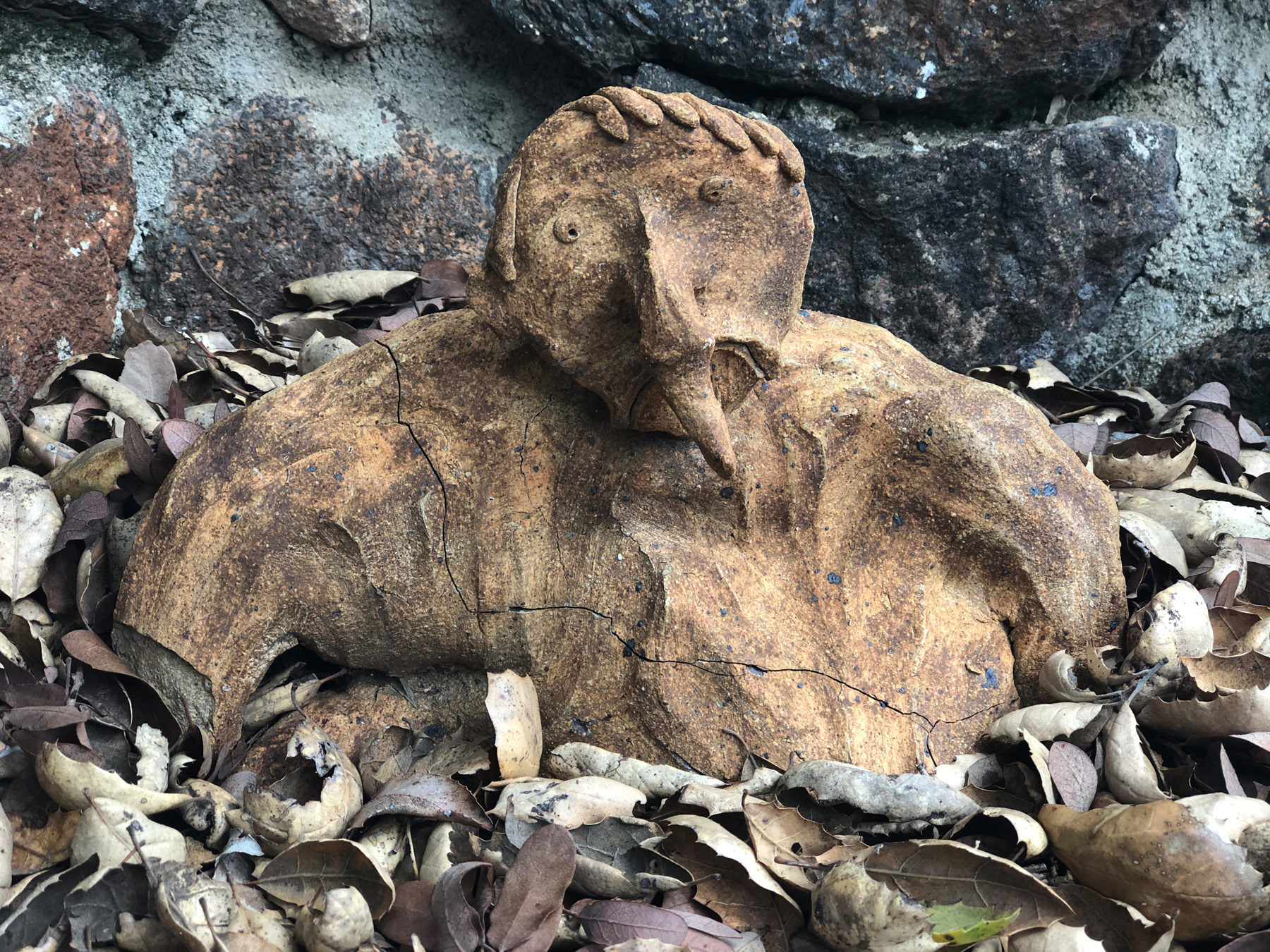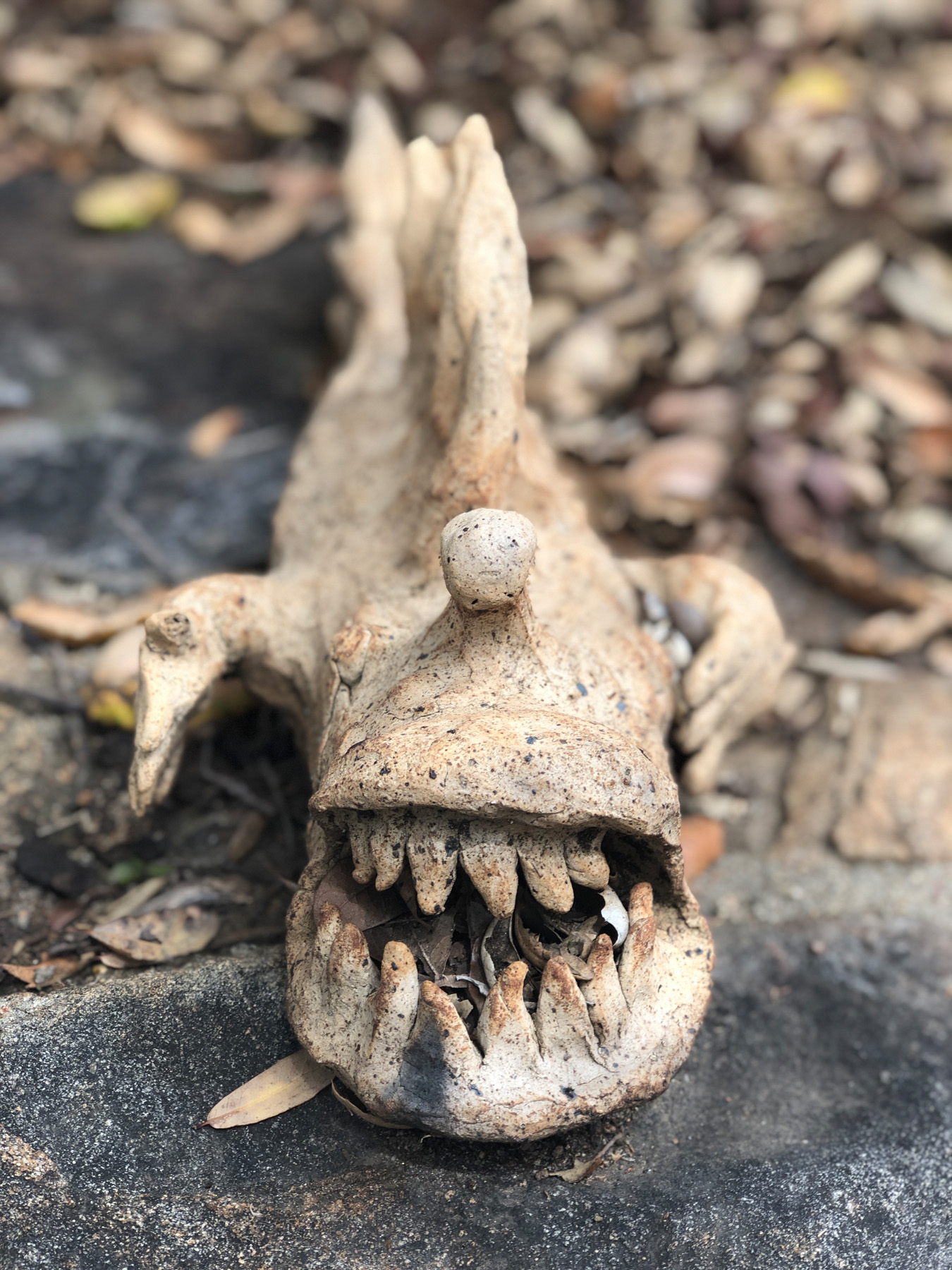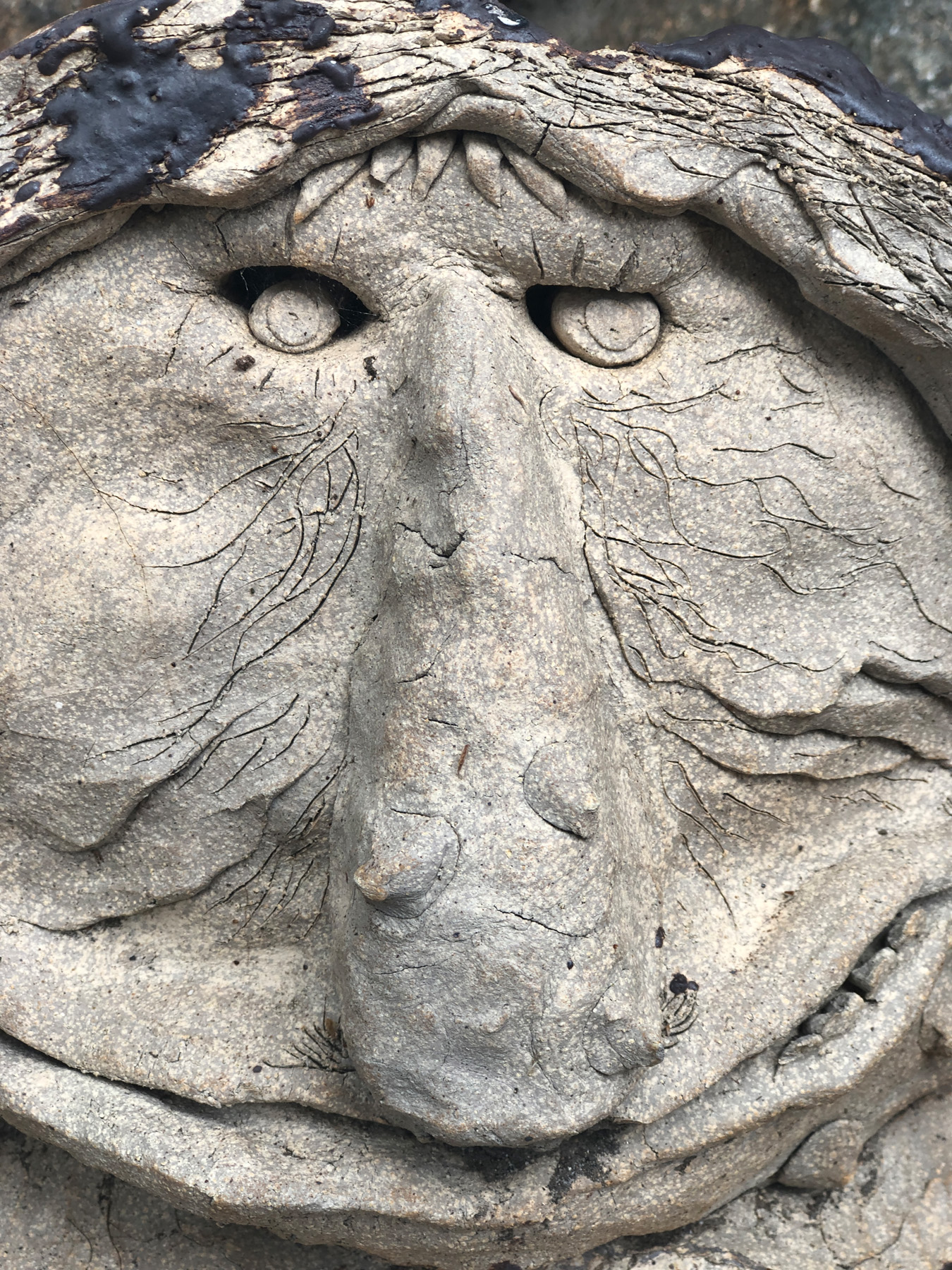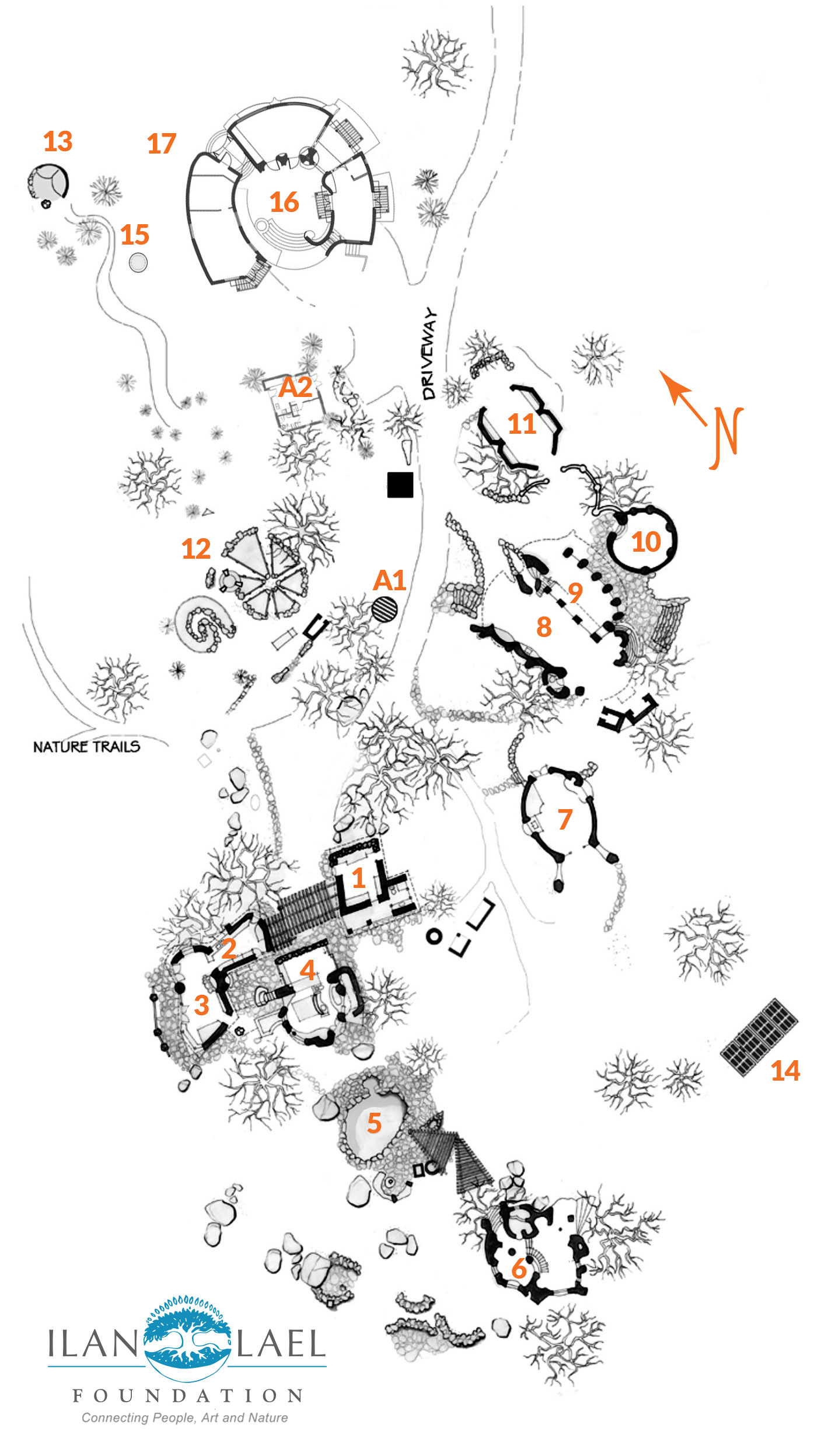 1 Jim’s Studio
1 Jim’s Studio
2 Kitchen
3 Living Room
4 Master Bedroom/Anne’s Studio
5 Pool, Hot Tub and Fountain
6 Boy’s House
7 Drafting Studio
8 Big Studio
9 Stained Glass Studio
10 Kiva Gallery
11 Sculpture Gallery
12 Passage Garden
13 Chapel/Quiet Space
14 Solar Array
15 Sundial
16 Ilan-Lael Foundation Center
17 Bert Hubbell’s Sculpture Garden
Future Additions
A1 Welcome Kiosk
A2 Caretaker’s Cottage
1. Jim’s Studio
This was the first structure on the property and Jim and Anne’s original home. Built using local resources, such as stone cleared from the land, adobe bricks and cedar from the local mountains, this one-room house served as the family home until 1962. Clerestory windows were added after the Cedar Fire to give it a lighter, more spacious feel. It now serves as Jim’s private studio.
2. & 3. Kitchen & Living Room
Built in 1962 for the Hubbells’ growing family, this structure features mosaic tiles that flow over kitchen countertops, windows and door sills. Cedar floors and ceiling beams are wood reclaimed from the Pines Fire of 2002. Large view windows face west. Reinforced steel and concrete columns inside the adobe walls lend great strength. Furniture is hand-made (the couch and chair in the living room were designed by James Hubbell). Light fixtures inside and out are functional sculptures. Nothing is painted. Hand-forged hardware adorns most of the doors, and sculptural or “found” wood objects function as door knobs.
4. Master Bedroom/Anne’s Study
This free-form sculptural building was shaped by hand. A local Native American man helped hand-dig the footings that allowed the slope of the land to remain untouched. The flat roof above Anne’s study is a place to enjoy the view and the cool breezes on hot summer nights. The interior and roof of this building are closed to the public.
5. Pool, Hot Tub and Fountain
When the Hubbells’ four sons were small, Anne and Jim asked them which they wanted most: bedroom(s) of their own or a swimming pool. They chose the pool. Constructed in 1970, its dark plaster bottom forms a dramatic backdrop for undulating tile, and is also effective as a passive solar heating element.
6. Boys’ House
Not long after the pool was finished, this habitable sculpture for the children was started in the early 1970s. Look closely at the floor: clay tiles feature mosaics of a peacock, firebird, redbird, and a bluebird. The original leaded-glass in the bathroom was damaged by the Cedar Fire and replaced in 2009. Incorporated into the bathroom design are abalone shells, plate glass, and other treasures gifted to the Hubbells by friends.
7. Drafting Studio
In 1982, James built this small drafting studio using a metal truss system made of lighter steel. Large south facing window/doors utilize the sun’s warmth for winter heating, and admit cooling breezes in summer.
8. & 9. Big Studio and Stained Glass Studio
This large multi-function space, built of a complex web of rebar and plaster wire beneath a sprayed-on cement cloak, broke ground in 1965. Prior to this studio’s completion, James worked outdoors—its completion was a happy change for James!
10. Kiva Gallery
The walls here are of salvaged adobe and fired brick, and the roof is covered with handmade tile from Tecate, Mexico. “ Kiva” comes from the light tile in the center of the floor—similar to Hopi kivas where light streams down from a central opening above.
11. Sculpture Gallery
This small gallery looks as if it grew naturally, in total harmony with its location. The room and its treasures are almost completely lit by natural light through clerestory windows.
12. Passage Garden
Created after the Cedar Fire, with help from friends at Camp Stevens in Julian, this gateway garden features raised-bed vegetable gardens, stone-fruit trees and an herb plot.
13. Chapel/Quiet Space
In the summer of 2009, 13 students spent three weeks constructing the open-air structure, and then came back throughout the winter and spring to add artistic embellishments. Embraced by its quiet beauty, one can enjoy striking views of sunsets, Palomar
Mountain and—from its patio looking east—Volcan Mountain and other Laguna/Cuyamaca peaks.
14. Solar Array
Added in 2010, these solar panels generate about 60% of the electricity used by the Hubbell home and studios. Funded by a generous grant from Sempra Energy Foundation, the array lightens Ilan-Lael’s energy footprint in consort with Jim’s signature designs for passive heating and cooling already used in the structures.
15. Sundial
Major donors to the Ilan-Lael Foundation are honored via this memorial sundial, which charts both the time of day as well as timeless memories of generous donors and loved ones.
16. Ilan-Lael Foundation Center
This new Center conforms to many more building-code rules than the original buildings, and thus has a few more straight lines than other structures on the property. But only a few: it has been exciting to see what James’ creativity adds to enlivening conventional shapes and surfaces. Look for mosaics in unlikely places, relief sculptures on walls and ceilings, and custom doors and window portals. Please ask how you can help James complete this crowning gift to our community—and the resulting events and programs centered here.
17. Bert Hubbell’s Sculpture Garden
Bert Hubbell, Jim’s younger brother, has lived in Japan for many years. Yet his generosity graces our grounds and art collection. His humorous figures populate this garden, and elsewhere throughout the property. In 2010, Bert donated 30 acres of undeveloped land adjacent to Ilan-Lael as a gift to the Foundation, preserving the natural surroundings that give Ilan-Lael its tranquility and exceptional beauty. The mosaic is of Mount Fuji, Japan’s highest peak, in honor of Bert.
 1 Jim’s Studio
1 Jim’s Studio 

